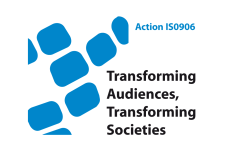- About the Action
- Events
- PhD workshop - Ljubljana 2014
- Action Open Conference - Ljubljana 2014
- New Media and Participation conference - Istanbul 2013
- Belgrade meeting 2013
- Media literacy research and policy - Brussels 2013
- ICA Pre-Conference 2013
- Tampere meeting 2013
- Budapest workshop 2012
- Milan meeting 2012
- Brussels PhD workshop 2012
- Brussels Action workshop 2012
- London meeting 2011
- Zagreb Conference 2011
- Lisbon meeting 2010
- Affiliated events
- WG 1
- WG 2
- WG 3
- WG 4
- Cross-WG
- Output
When the museum becomes the message for participating audiences
Pruulmann-vengerfeldt, P., Runnel, Pille (2011). When the museum becomes the message for participating audiences. CM - ČASOPIS ZA UPRAVLJANJE KOMUNICIRANJEM; COMMUNICATION MANAGEMENT QUARTERLY, 6(21), 159-180.
https://www.etis.ee/ShowFile.aspx?FileVID=51934Abstract: This article aims to analyse the notion of participation in the museum context using an audience studies perspective. Museums are increasingly competing for the attention of the public in the arenas of leisure and education, the process of which is part of the commercialisation of the museum institution. In addition, a turn towards interactivity is taking place in museums, and while that might serve well to revitalise the museum and bring it closer to its audiences, it does not sufficiently support realisation of the change of the museum institution into a laboratory-type museum (de Varine, 1988; van Mensch, 2005) – a concept defined through the communicative and democratic aspects of the museum. As is the case with many public institutions, the democratisation of society is increasing the need for transparency and accountability, which in turn has brought public engagement to the attention of the museum. According to Simon (2010),museums need to find a balance between the activities of the museum and audiences: the(potential) need to overcome the shyness of expertise combined with the need to organise the (potential) flood of amateurs. These different evolutions – the ambiguity of expertise, the move towards interactivity and the need for public engagement – increase the need to understand participation at museums. This paper discusses the ideas of what participation means in the museum context through Giddens’ framework of democratising democracy (1995) by looking at the museum through three key roles: as cultural, economic and public institutions, each of which has different reasons for and meanings of museum participation.

